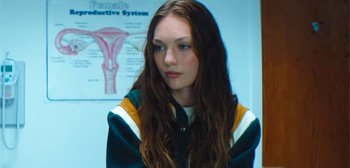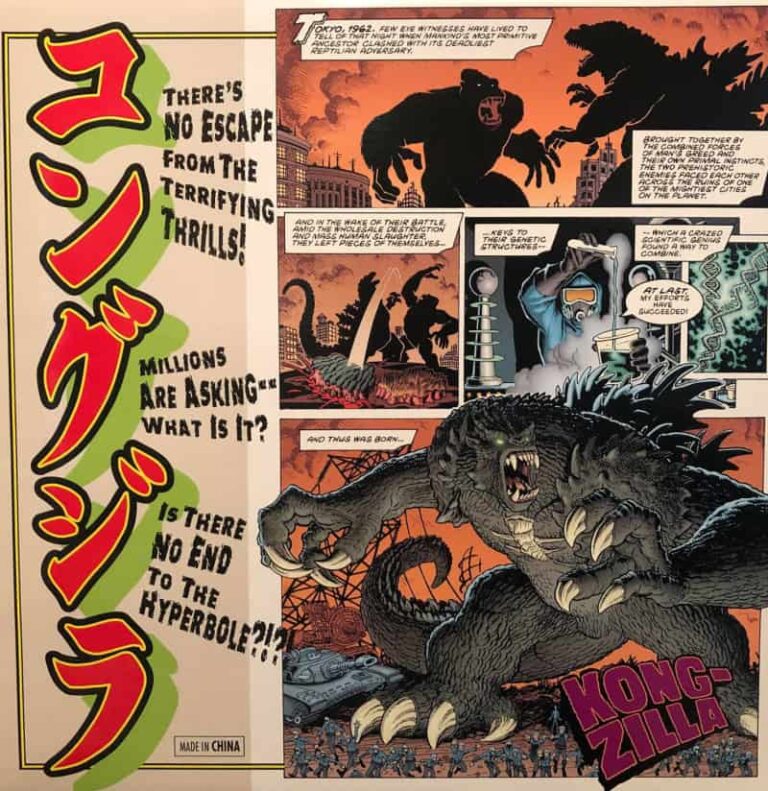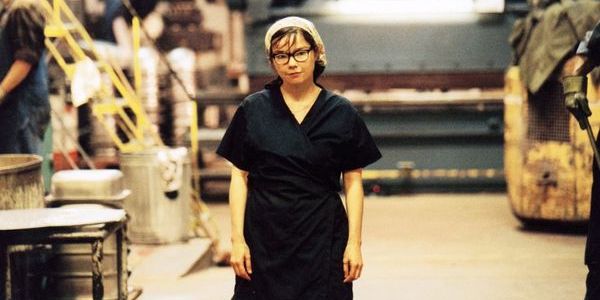World of Wong Kar Wai Retrospective Arrives Virtually to Film at Lincoln Center
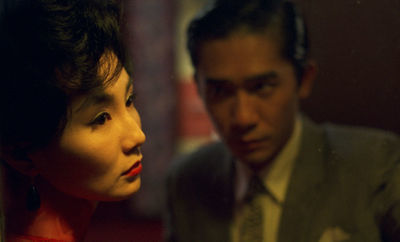
Although he has only 10 feature films to date in a career that has spanned more than 30 years, Wong Kar Wai has more than solidified his position as one of the true masters of contemporary cinema. Over that time, he has created a distinctive artistic style, one that favors enigmatic narratives often based around ideas involving romantic yearning expressed through impossibly charismatic actors and gorgeously hazy visuals. He is one of the truly original voices working in cinema today. So when a new offering from him does come along, it is a genuine event.
Although it has now been more than eight years since his last feature, this crazy year of 2020 is concluding with the next best thing for fans of cinema in general and Wong in particular with “World of Wong Kar Wai,” a career-spanning retrospective of his feature films being presented by New York’s Film at Lincoln Center and Janus Films. Originally scheduled to appear in June, this program will begin on November 25 with an extended run of a gorgeous restoration of the film generally considered to be his greatest, “In the Mood for Love” (2000), to commemorate its 20th anniversary, and will be followed over the next couple of weeks by presentations of his other films, many of them also featuring new 4K restorations as well. These films can be accessed via FLC’s Virtual Cinema and will then become available for viewing through other arthouse virtual cinema setups throughout the country. Although it is unfortunate that it will not be possible to enjoy these films in all of their big-screen glory, this is nevertheless one of the key cinematic events of the year. It also serves as a reminder, not that one was needed, of Wong’s talents, whose artistic skill and sheer love of film is such that even his lesser works stand head and shoulders over the best efforts of most everyone else working today.
The centerpiece of the retrospective is the return of “In the Mood for Love,” a work that was instantly hailed upon its release as a masterpiece and which has not lost a bit of its luster in the ensuing decades. Set in Hong Kong in 1962, the film is concerned with Mr. Chow (Tony Leung) and Mrs. Chan (Maggie Cheung), both of whom coincidentally move into the same crowded apartment building on the same day with their respective spouses. Those spouses are constantly away on “business” and as a result, Mr. Chow and Mrs. Chan develop a friendship that is soon rocked when they come to realize that their partners are having an affair. The two begin to spend more time together, albeit clandestinely so as not to arouse any untoward suspicions about their friendship, which becomes more complicated when they realize that their feelings towards each other are developing into something potentially deeper. Barely suppressed desire in a common emotional thread in most of Wong’s films but never has it been celebrated more rapturously than it has been here. Visually, the film is a feast for the eyes with the gorgeous cinematography from Christopher Doyle and Mark Lee Ping-Bing rendering everything from a teacup to the faces of Leung and Cheung (who were two of the biggest stars in Hong Kong at the time it was made) in the most exquisite manner possible. At the same time, Wong takes a familiar narrative trope of an adulterous affair and finds a new approach that transforms it into one of the most powerful and ultimately devastating depictions of thwarted desire ever put on film.

When “In the Mood for Love” was released, it was seen by many as a summation of the themes and approaches that Wong had been cultivating since the very start of his career. For proof of his evolution, one needs to look no further than his 1988 debut, “As Tears Go By.” For his first feature, Wong tackled the crime film genre, which was then resurgent in Hong Kong in the wake of John Woo’s smash hit “A Better Tomorrow.” “As Tears Go By” is the tale of a low-level triad member named Wah (Andy Lau) who struggles to protect Fly (Jacky Cheung), a friend and cohort whose bad luck and worse temper gets him in ever-increasing levels of trouble, while developing romantic feelings for his cousin, Ngor (Maggie Cheung), that inspire thoughts of getting out of the criminal life forever. Perhaps not unexpectedly, this is easily the most conventional of all of Wong’s films—it is perhaps the only thing that he has ever made that could have been done by someone else—and because of that, it is easy to dismiss. However, after watching his later films, one can detect a number of ideas and elements that he would go on to develop in greater and more personal detail, not to mention the start of a long and increasingly fruitful working relationship with Cheung. Still, as debut works go, this is certainly an accomplished stab at comparatively straightforward genre exploration and it would prove to be Wong’s biggest commercial hit in his home country for nearly a quarter-century.
With his second film, “Days of Being Wild” (1990), Wong offered up the first true representation of what would become his recognizable style. Set in 1960, the film is centered around Yuddy (Leslie Cheung), a young roue who seduces two women, the quiet and reserved Su Li-zhen (Maggie Cheung) and showgirl Mimi, and then breaks their hearts. His attitude towards women clearly stems from his unresolved feelings towards his adoptive mother, a former prostitute, and when he discovers that his birth mother is still alive, he ventures out to the Philippines to track her down. Essentially dispensing with the narrative concerns of his previous venture, Wong took potentially familiar material and utilized a dreamier approach far more interested in mood and atmosphere than in moving the story from point A to point B. One of the keys to this approach came in the form of cinematographer Christopher Doyle, working with Wong in the first of what would become one of the most fruitful filmmaker/cinematographer collaborations of modern times. Together, they transform the film into something beautiful and unique and while it did not find much commercial favor in its homeland (leading to the cancellation of a potential sequel hinted at during its finale), it was the first real evidence of what Wong was truly capable of.
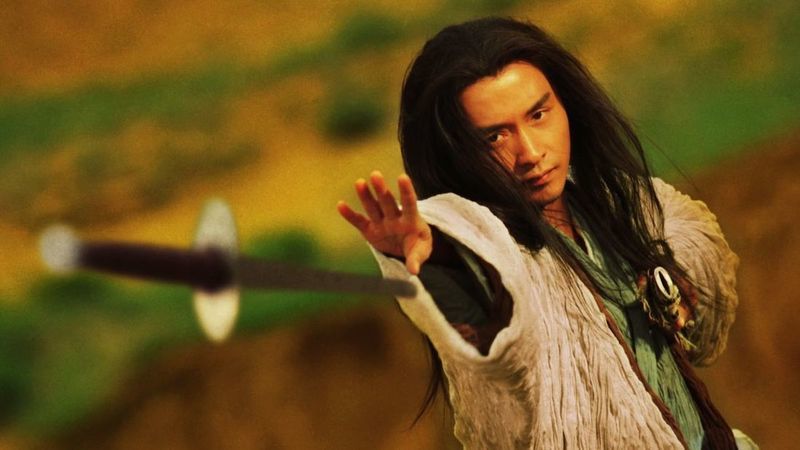
Throughout his career, Wong’s films have often had long and complicated production schedules that can run for months, even years, and that was certainly the case with his next film, the bizarre wuxia epic (of sorts) “Ashes of Time” (1994). Very loosely inspired by the Jin Yong novel The Legend of the Condor Heroes, the film is centered around an assassin (Ou-yang Feng) who exiles himself to the desert in order to nurse his broken heart while coming across other swordsmen (including Tony Leung and Jacky Cheung) whom he hires to carry out his contracts for him. At least I think that is what it is about—I cannot be sure because this is the one film where Wong’s stylistic approach is so enigmatic that it is often impossible to figure out what is happening at any given moments. (In 2008, he presented a re-edited version, “Ashes of Time Redux,” which is the one presented here, but even that failed to clear up most matters.) That said, while it does not necessarily “work,” as they say, from either a dramatic or action perspective and most viewers, (even fans of Wong will find it to be far too impenetrable), if you just sit back and let it sort of wash over you without any expectations of understanding, it can be a pretty trippy experience with a pronounced, astounding visual style.
In the end, perhaps the best thing about “Ashes of Time” is that the combination of the protracted production and fears of creating another box-office failure inspired Wong to create and produce a second film on an accelerated six-week schedule that would end up hitting theaters a couple of months before the bigger film. That would be an impressive enough feat on its own but the movie, “Chungking Express” (1994), would prove to be both his big international breakthrough and the most sheerly enjoyable of all of his films. Set in Hong Kong, the movie tells two separate stories that both feature lovelorn policeman and a snack bar as a key location. In the first, Qiwu (Takeshi Kaneshiro) is dumped by his girlfriend on April 1 and resolves to wait a full month before accepting her absence, going so far as to scour the stores each day for canned pineapple (her favorite food) with a May 1 expiration date. One night, while drowning his sorrows at a bar, he crosses paths with a mysterious woman (Brigitte Lin), one on the run from gangsters after a drug smuggling operation goes sour, and they spend the night together in a nearby hotel. In the second, another policeman, known only as Cop 663 (Tony Leung), is dealing with his recent breakup with a flight attendant when he turns up at the snack bar and catches the eye of new employee Faye (Faye Wong). When the flight attendant drops off a letter to Cop 663 containing his apartment keys, Faye uses them to sneak into his apartment to straighten up the place in an effort to get closer to him, albeit at a distance.
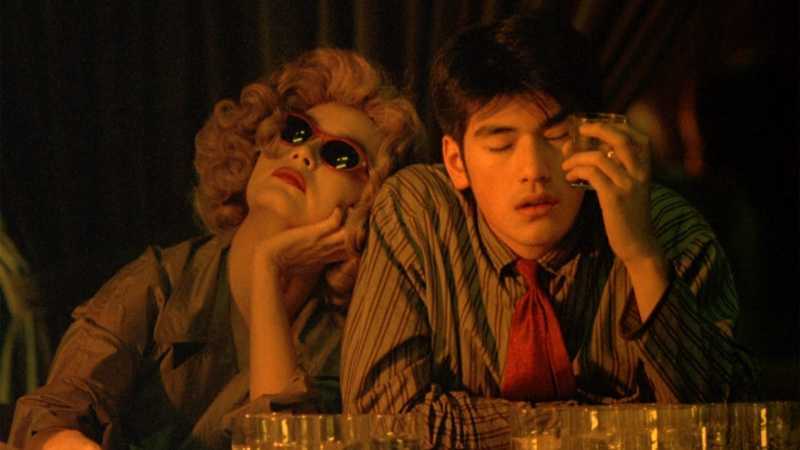
When “Chungking Express” debuted, it became the symbol of cinematic cool for moviegoers, in the way that Godard was back in the Sixties. That was thanks to the utterly hypnotic visuals, the charismatic performances from the key players, a storyline that was easy enough to follow while still remaining as oblique as anything Wong had done in the past, and a killer soundtrack that transformed the pop favorite “California Dreaming” into something genuinely operatic through its numerous deployments during the second story. Of course, much of what was considered to be tres chic back in 1994 looks pretty lame today but, if anything, “Chungking Express” feels even better and bolder now than it did back then. Usually, anthology films falter because as soon as viewers get invested in one story, they are yanked out and put into another. Here, that is not a problem because even though Wong was obviously working on an accelerated schedule (with the screenplay reportedly not even being completed when production began), both stories are deeply satisfying explorations of Wong’s beloved themes that end up being quite moving despite the comparatively lighthearted approach. While all the films in this retrospective are worth a look, this one, especially in its gorgeously restored state, is the pick of the litter.
The speed in which Wong made “Chungking Express” must have inspired something in him for his next two films came about in relatively rapid fashion. Originally conceived as a possible third story for “Chungking Express,” “Fallen Angels” (1995) told another pair of offbeat and vaguely connected stories of love and disillusionment—one involving a hitman who is preparing to leave a life a crime for good but must contend with his feelings towards his female partner in crime, and the other involving the misadventures of a odd young man who became mute after eating cans of expired pineapple. While the end result is reasonably stylish and entertaining, there is the sense throughout that Wong is repeating himself here. With “Happy Together,” he shifted to a more straightforward and direct narrative approach to tell the story of a gay couple (Tony Leung and Leslie Cheung) who journey to Argentina in an effort to patch up their troubled relationship. Though fans of Wong’s swooned-out style may be disappointed with the more coherent and cohesive approach he utilizes here, it ultimately proves to be the right one and illustrates that he is not, as some critics have charged, a filmmaker who deploys slick surfaces in his work to distract from the shallowness of his stories.
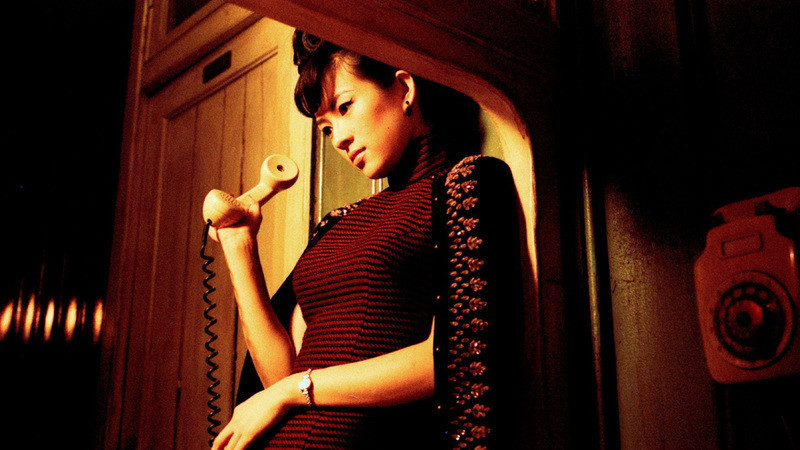
Although Wong’s next film, “In the Mood for Love,” would be embraced by moviegoers throughout the world, his followup to that, “2046” (2004), would arrive after one of the most troubled production periods in recent memory to entrance and perplex viewers in equal numbers. Set in the not-too-distant future, this loose sequel to “In the Mood for Love” (with bits of “Days of Being Wild” thrown in for good measure) finds Mr. Chow (Tony Leung) trying to cope with the loss of his platonic love by becoming a suave ladies man who loves them and leaves them. What he doesn’t seem to realize is that the women he goes after (played by Faye Wong, Jie Dong, Zhang Ziyi, and Gong Li) all seem to suggest aspects of his beloved Su Li Zhen. Granted, I am making this sound a lot more coherent than it plays out (and I haven’t even mentioned the sci-fi novel that Chow is writing that we occasionally see brought to life) and even those who normally find themselves on Wong’s wavelength may find themselves lost in all the romantic ennui and multiple levels of interpretation. (The title alone represents the name of the book that Chow is writing, the number of the hotel room that he once shared with Su Li that sort of reappears here, and the year in which Hong Kong’s period of self-regulation under Chinese rule is scheduled to end.) What’s much easier to grasp at first glance is that this is perhaps the most formally beautiful of all of Wong’s films—despite being made over such a long period of time under no less than three cinematographers, there is not a single shot here that is anything less than gorgeous to behold. The end result may confuse and alienate some viewers, I suspect, but they will find it to be a feast that they can happily gorge on for a long time.
Perhaps the biggest curiosity in the entire “World of Wong Kar Wai” program is “The Hand,” an extended version of the short film that he contributed to “Eros,” a largely forgotten 2005 anthology project in which he teamed up with Steven Soderbergh and Michelangelo Antonioni to present a trio of stories revolving around erotic desire. Clearly influenced by “In the Mood for Love,” Wong’s section, set in his beloved Sixties-era Hong Kong, told the story of a struggling tailor’s assistant (Chang Chen) who is hired by a glamorous prostitute (Gong Li) to serve as her dressmaker. Although his love for her is ultimately unrequited, he still expresses his feelings for her through his creations, the adoration remaining even as his fortunes rise and hers sink over time. While “Eros” as a whole was largely dismissed when it came out, Wong’s segment was generally regarded as the best by far of the three, a work as lovely and elusive as his full-length features that also served as a nice homage to co-director Antonioni, whom Wong has often cited as an influence on his own films. Taken on its own as a separate and more fully fleshed-out entity, it still works, though I suppose it is ultimately more of a curiosity than anything else.
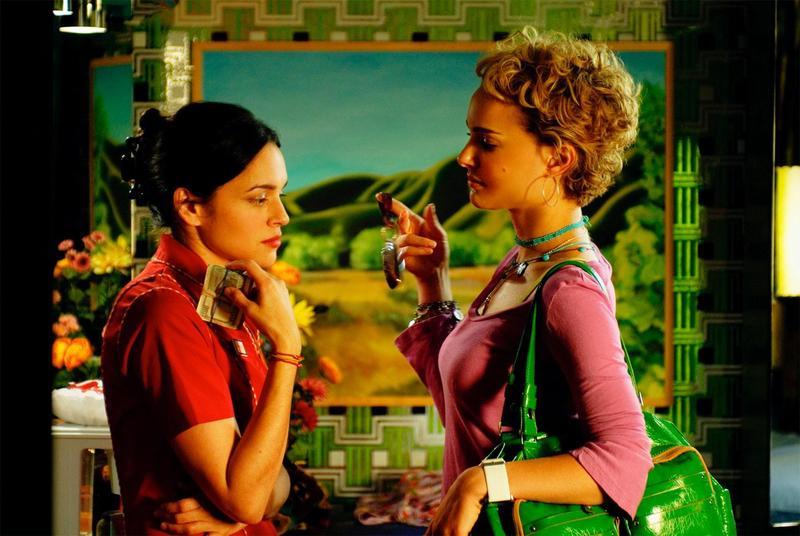
On the other hand, his next film, “My Blueberry Nights,” is one that tends to be dismissed even by his fans as a curiosity at best and a bit of a disaster at worst. Let me assure you right here and now that this assessment is nuts and that the film, although admittedly flawed in parts, is an utterly beguiling gem that is ripe for rediscovery. For his first English-language production, he offers up a loose triptych of stories that are tied together by the shared theme of fraying relationships and the presence of singer Norah Jones, in her first acting role, in each of them. She plays Elizabeth, a young woman in New York nursing a broken heart with the aid of similarly lovelorn diner owner (Jude Law). Instead of hooking up with him, Elizabeth decides to go on a cross-country journey of self-discovery that lands her in Memphis, where she becomes embroiled in the drama of a local cop (David Strathairn) and his estranged wife (Rachel Weisz), and Vegas, where she befriends a card sharp (Natalie Portman) with more bravado than luck, while the now-besotted diner owner tries to track her down.
While the presence of American locations and big-name Hollywood stars may have suggested to some that Wong was somehow selling out, the resulting film, while perhaps less oblique than usual (possibly because he and co-writer Lawrence Block were obligated to have completed the screenplay before shooting), was still recognizably his with its endearing stew of drama, romance, tears, humor, danger and sublimated eroticism. As for Jones, she is obviously not a trained actress per se but her direct nature and utter lack of actorly artifice fits in beautifully with her character and comes as a nice contrast to the performances contributed by her more seasoned co-stars. Although Wong was unable to get Christopher Doyle to shoot the film, his replacement, Darius Khondji, was no slouch and he find rapturous beauty in everything from a run-down casino to a periwinkle-frosted cupcake to the sight of Jones sleeping with just a hint of melted ice cream on her upper lip. In hindsight, it was probably inevitable that “My Blueberry Nights” would receive a cool response, both for being Wong’s English-language debut and for being in the unenviable position of following the one-two punch of “In the Mood for Love” and “2046,” but I can assure you that it is a cinematic bliss-out of the highest order. Put it this way—if your personal list of favorite films includes the likes of “One from the Heart” and “The Lovers on the Bridge,” you need to see this movie now.
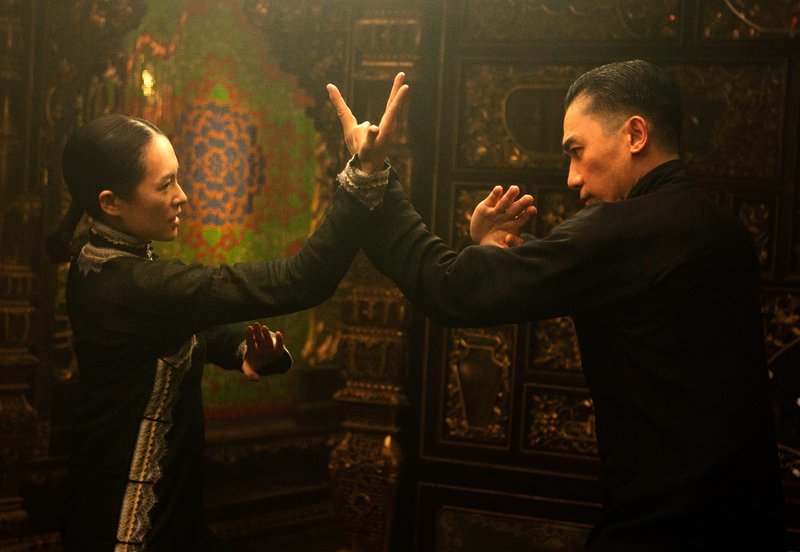
Wong’s next film, and currently his last to date, “The Grandmaster,” found him returning to the martial arts genre that he previously explored in “Ashes of Time.” Once again, Wong was caught up in a wildly extended production period that stretched out to over three years, including long pauses that became necessary when star Tony Leung (in his seventh film with Wong) broke his arm on two separate occasions, and resulted in no less than three separate versions of the film in existence by shortening it first for its appearance at the Berlin Film Festival and later reducing it further for its American release. As a result, one’s reaction to the film, a biographical look at IP Man (Leung), the legendary martial arts fighter who would eventually become famous for establishing a school that would soon number Bruce Lee among its students, depends largely on which version you happen to be watching—both the original cut and the American edit will be made available here. Of the two, the original version is clearly the preferable one—the attempts in the American version to streamline and more fully explain Wong’s particular narrative approach paradoxically serve to make things even murkier than they were in the first place. And yet, while the film as a whole is uneven, even in its full version, it contains plenty of glories to behold—Wong and famed choreographer Yuen Woo-Ping have put together some of the most lyrically beautiful martial arts sequences to grace the big screen since Chow Yun-Fat and Zhang Ziyi took to the trees in “Crouching Tiger, Hidden Dragon.” Ziyi also turns up here as a rival of IP Man and she and Leung pretty much scorch up the screen in their scenes together. “The Grandmaster” is ultimately a mess, I suppose, but it is the kind of mess that will stick in the mind long after most other films of a more conventional nature have been long since forgotten.
For more information on the “World of Wong Kar Wai” retrospective and how to order virtual screenings of the movies, click here.
